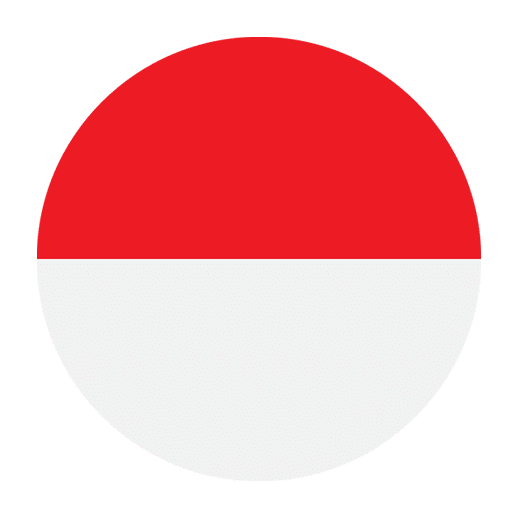Translating languages is a complex and nuanced task, and translating Indonesian is no exception. Indonesian, or Bahasa Indonesia as it is known locally, is the official language of Indonesia and is spoken by millions of people. While it may seem straightforward at first glance due to its relatively simple grammar compared to some other languages, Indonesian presents a unique set of challenges for translators. This article will delve into some of the most significant difficulties you might encounter when translating Indonesian to English, providing insights and tips to help you navigate these challenges effectively.
The Complexity of Indonesian Vocabulary
Indonesian vocabulary can be a maze for translators due to its richness and diversity. The language has absorbed words from various languages, including Dutch, Portuguese, Arabic, Sanskrit, Chinese, and local Austronesian languages. This amalgamation can make it difficult to find the most appropriate English equivalent for some words.
Loanwords and Borrowings
Indonesian has a plethora of loanwords from Dutch, owing to the colonial history of Indonesia. Words like “kantor” (office) from the Dutch “kantoor” and “gratis” (free) from the Dutch “gratis” are common. However, not all loanwords are used in the same context as their original language, which can be confusing for translators. Additionally, some words have evolved in meaning over time, making direct translations misleading.
Regional Variations
Indonesia is an archipelago with over 17,000 islands, each with its own linguistic quirks. While Bahasa Indonesia is the standard, regional dialects and local languages can influence how words are used and understood. For example, the word “pisang” means banana in standard Indonesian, but in some regions, it can also mean crazy or silly, depending on the context. Being aware of these regional variations is crucial for accurate translation.
Grammatical Challenges
While Indonesian grammar is often touted as being simpler than that of many other languages, it still poses its own set of challenges for translators.
Word Order and Sentence Structure
Indonesian follows a Subject-Verb-Object (SVO) word order, similar to English. However, the flexibility in Indonesian sentence structure can create ambiguity. For instance, in Indonesian, the phrase “buku baru” can mean either “new book” or “the book is new,” depending on the context. This flexibility requires translators to pay close attention to the surrounding text to determine the correct meaning.
Affixes and Word Formation
Indonesian uses a system of affixes (prefixes, suffixes, infixes, and circumfixes) to modify the meanings of root words. For example, the root word “kerja” (work) can become “pekerja” (worker), “pekerjaan” (job), or “bekerja” (to work) with different affixes. Understanding these affixes and their implications is essential for accurate translation. However, this can be tricky as some affixes can change the meaning of a word subtly or even dramatically, requiring a deep understanding of the language.
Contextual Nuances and Cultural References
Translating any language involves more than just converting words from one language to another. Understanding the cultural context and nuances behind those words is equally important, and Indonesian is no exception.
Idioms and Expressions
Every language has its own set of idioms and expressions that don’t translate directly into other languages. Indonesian is rich in idiomatic expressions that can be puzzling for translators. For example, the phrase “makan hati” literally translates to “eat heart” but actually means to suffer emotionally. Translating such expressions requires not only linguistic skills but also cultural insight to convey the intended meaning accurately.
Honorifics and Formality Levels
Indonesian has different levels of formality that can affect word choice and sentence structure. For instance, the word “saya” is a formal way to say “I,” while “aku” is informal. Similarly, addressing someone with “Anda” is formal, whereas “kamu” is informal. Choosing the appropriate level of formality is crucial in translation to ensure that the text respects cultural norms and conveys the right tone.
Pronouns and Gender
Unlike English, Indonesian does not have gender-specific pronouns. The word “dia” can mean both “he” and “she,” and “mereka” can mean “they” without specifying gender. This lack of gender distinction can lead to ambiguity in translation, especially in texts where gender is important for context. Translators often need to rely on contextual clues to determine the appropriate gender in English, which can be challenging.
Reduplication
Indonesian uses reduplication extensively to convey different meanings. For example, “anak” means child, but “anak-anak” means children. Similarly, “rumah” means house, while “rumah-rumah” can imply multiple houses or houses in general. Reduplication can also be used to create entirely new words with different meanings, such as “laki-laki” (man) from “laki.” Translators need to understand the nuances of reduplication to convey the correct meaning in English.
Translating Indonesian Literature and Poetry
Translating literary works and poetry presents additional challenges due to the artistic and often abstract nature of the language used.
Metaphors and Symbolism
Indonesian literature and poetry are rich in metaphors and symbolism that may not have direct equivalents in English. For example, the term “tanah air” literally means “land and water” but is often used to symbolize the homeland or motherland. Translating such terms requires a deep understanding of the cultural and historical context to preserve the intended meaning and emotional impact.
Rhythm and Rhyme
Poetry often relies on rhythm and rhyme, which can be difficult to maintain in translation. Indonesian poetry, like poetry in any language, uses specific sounds, rhythms, and structures that may not have direct counterparts in English. Translators must balance the need to preserve the original form with the need to convey the meaning and emotional tone of the poem.
Technological and Modern Terminology
As with any language, Indonesian is continuously evolving, and new terms are constantly being introduced, especially in the fields of technology and science.
Adapting to New Terms
Translators must stay up-to-date with new terminology and understand how these terms are used in context. For example, the word “gadget” is commonly used in Indonesian to refer to electronic devices, but the specific connotations and usage can vary. Understanding these nuances is crucial for accurate translation.
Technical Jargon
Technical jargon can be particularly challenging because it often involves specialized knowledge. Translators must not only understand the technical terms in both languages but also be able to convey the same level of precision and clarity. This requires ongoing education and familiarity with the latest developments in various fields.
Machine Translation and its Limitations
With the advent of technology, machine translation tools like Google Translate have become increasingly popular. While these tools can be useful for basic translations, they have significant limitations, especially for a language as complex as Indonesian.
Context and Nuance
Machine translation often struggles with context and nuance, leading to inaccurate or awkward translations. For example, translating idiomatic expressions or culturally specific terms often results in literal translations that miss the intended meaning. Human translators are better equipped to understand and convey these nuances.
Quality and Reliability
While machine translation is improving, it is still not as reliable as human translation for complex texts. Errors and inaccuracies are common, and relying solely on machine translation can lead to misunderstandings or miscommunication. Human translators provide the quality and reliability needed for accurate and effective translation.
Conclusion
Translating Indonesian to English is a challenging but rewarding task that requires a deep understanding of both languages and their cultural contexts. From vocabulary and grammar to idioms and cultural references, translators must navigate a myriad of complexities to produce accurate and meaningful translations. Whether you are a professional translator or a language enthusiast, understanding these challenges and developing strategies to address them will enhance your translation skills and contribute to more effective cross-cultural communication.

